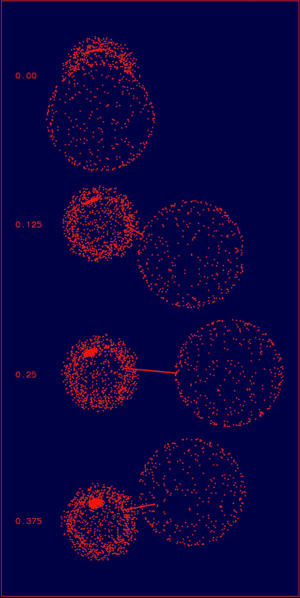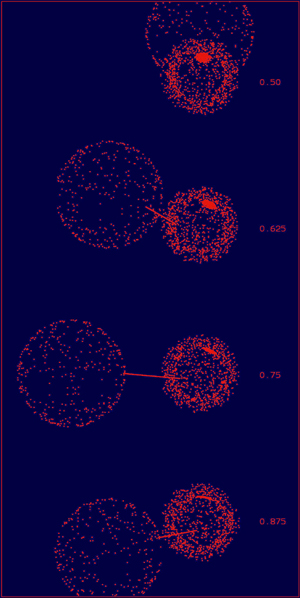

|
An international team of astronomers, led by Vilppu Piirola of Tuorla Observatory, have made extensive observations of the polarised light coming from W Serpentis, a stellar pair in the constellation of Serpens, the Snake. W Serpentis is an unusual kind of binary star in which matter is being transferred quite rapidly from the lighter to the heavier star (i.e. the 'primary' star of the system). The matter doesn't necessarily stream directly onto the primary, but can collect in a so-called accretion disk in which the primary star is embedded. Embedded is the key word here, because it is usually assumed that the primary star is nevertheless well and truly visible in such systems — however, in W Ser-type stars, the accretion disk may be so thick and influential on the overall light from the system, that disentangling the contributions from due to the primary star and the accretion disk is difficult. In the case of W Ser, the secondary star, from which matter is being transferred, is so faint that it can only be seen from the eclipse effects when passing in front of the primary. A way to break through the ambiguities is to observe the star not in ordinary light, but in polarised light. By monitoring how the brightness and polarisation of the star changes during several full rotations of the system (which takes around 14 days) with the Nordic Optical Telescope, and the remotely controlled KVA-60 telescope, Vilppu Piirola, Andrei Berdyugin and Seppo Mikkola (of Tuorla Observatory) and George Coyne, S.J. (of the Vatican Observatory) have been able to put together a detailed picture of the system. The astronomers found that the primary star in the system very likely has a bright spot or jet high on its surface, close to one of its poles. The figures show a sketch of the system, with the spot clearly visible on the primary star, and appearing with different aspect angles, and sometimes almost dissapearing, as the system rotates through a full cycle. Somewhat contrary to expectation, the team found no evidence for an accretion disk from the polarisation observations, although the disk could certainly be present all the same. If the disk were particularly thick and dense, then its emitted light might have very little polarisation, making its detection difficult. The team found other things though: firstly, evidence for a shell of hot plasma — a natural source of polarisation — around the primary; and secondly, evidence of polarised emission from the stream of matter connecting the two stars. What exactly is that hot spot/jet doing up at the pole? The team speculates that the hot spot is associated with an accretion disk so thick that it envelopes the primary star entirely — the obscured central object can only be seen through the scattered radiation in the polar directions of the disk, where the circumstellar envelope is thinner and light can escape more easily from the hot central star. The study of W Ser has been published in the Astrophysical Journal. |
 
Schematic of the W Ser system, as reconstructed by polarised light observations made at the Nordic Optical Telescope. The figures show the binary star system as it rotates through a full cycle, from top to bottom. The primary is the smaller one of the system — nevertheless it is quite massive and hot as stars go; the lighter (but larger) star is the much less massive secondary. The primary is shown surrounded by an atmosphere of ionised gas, and with a bright spot (or jet) at high latitude. The thin line represents the stream of matter flowing from the lighter to the heavier star. All of these components contribute to the polarisation of the light emitted by the system. |